If someone suggested that you should spend your hard-earned money on something that looks distinctly unappealing and then expend quite a bit of physical effort and time in burying that same “something” in a deep and muddy hole in the ground, you’d quite reasonably conclude that it was a piece of advice verging on the idiotic. But what if they promised you barrow-loads of beauty in return? Because what I’ve just described is the annual chore of autumn bulb-planting, an act of faith and a labour of love capable of testing the resolve of even the keenest gardener, yet one that yields such rich rewards that we put ourselves through it every year.
We do so because we know all too well that we’ll kick ourselves if we don’t. That much as our backs might ache after an afternoon of burying bulbs into the cold, wet ground, the temporary discomfort endured is as nothing compared to the painful pangs of regret that we’d otherwise suffer the following spring. That, in the end, those oodles of colourful, scented, pollinator-friendly, mood-uplifting flowers resulting from our hard work will make it all worthwhile.
Watch out for squirrels, rodents and sometimes even badgers, which can stealthily raid your garden of its fresh larder of tulip and crocus bulbs
What should you plant? Below is a tiny taster of the many thousands of different kinds of spring-flowering bulbous varieties that are available from good garden centres and specialist online suppliers at this time of year. But bear in mind that this summer's fierce drought throughout much of Europe has had a negative impact on the grade/size of the bulbs available this autumn (bigger is better in terms of vigour and flower size) as well as their numbers, with the result that some especially fashionable/desirable/hard-to-get varieties are already in short supply. Also bear in mind that while it's best to order/purchase tulip bulbs as soon as possible in order to be sure of getting your hands on the varieties of your choice, they are better planted later this autumn (November) after a few hard frosts have lowered soil temperatures, minimising the risk of the fungal disease known as tulip fire. But don't just bung them somewhere warm and bright where they'll quickly dry out; instead store the soft, fleshy bulbs in a cool, dark, dry spot until the time comes to plant them in the ground.
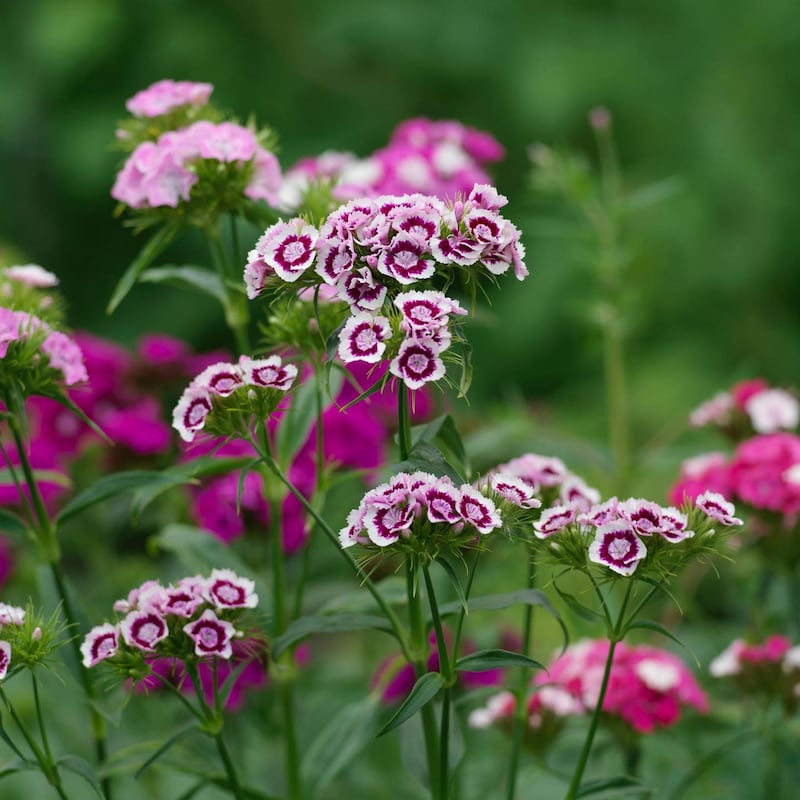
When it comes to the correct planting depth for your spring-flowering bulbs, aim for something that's roughly three times the height of the bulb itself, deeper again for tulips, making sure to place each bulb with its pointed end up. Finally, watch out for squirrels, rodents and sometimes even badgers, which can stealthily raid your garden of its fresh larder of tulip and crocus bulbs, a crime that's often only discovered many months after it's been committed. To deter them, cover the freshly planted bulbs with a layer of wire mesh/ chicken wire before backfilling with soil. Along with most good Irish garden centres, recommended specialist bulb suppliers include Dublin-based mrmiddleton.ie which carry a very wide range , Cork-based Fruit Hill Farm (stockists of a small range of certified-organic bulbs), and in the UK, avonbulbs.co.uk, peternyssen.co.uk (also stockists of certified-organic bulbs), sarahraven.com, dejager.co.uk and fluwel.com.
Daffodils (Narcissus) Few spring-flowering bulbs will reward your efforts as abundantly or as repeatedly as narcissus; it's not unusual to see established colonies of these pretty spring blooms in old gardens that are descendants of bulbs first planted back in the Victorian era. Countless excellent garden varieties are available with a flowering period that stretches from late winter to late spring, some of which are ideally suited to more naturalistic, meadow style planting (examples include the May-flowering, fragrant pheasant's eye narcissus, N. poeticus var. recurvus and the April-flowering N. 'Actaea'), others to flower borders (examples include the ivory-coloured, long-flowering, fragrant, multi-flowered 'Sailboat' and the ghostly 'Thalia'). There are also many compact varieties perfect for a small pot/ window-box including the dainty, pale-lemon, April-flowering 'Hawera', 'Jetfire' and the diminutive, early-flowering 'Tete-a-Tete'. Narcissus do best in a fertile, moisture-retentive but free-draining soil in full sun or light, dappled shade.
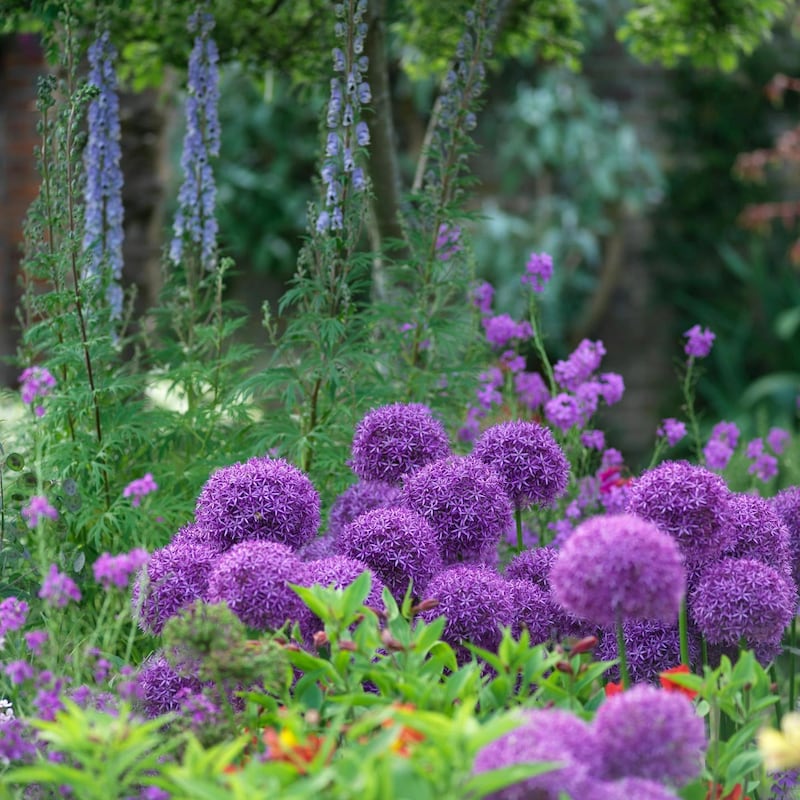
Alliums Yet another large and hugely decorative, hardy genus of late spring/ early summer-flowering bulbs, some with impressively tall, strong stems and giant, pollinator-friendly, spherical flowerheads (examples include the statuesque Allium 'Ambassador' and Allium 'Globemaster') and others with flowers of altogether more dainty proportions such as the graceful Allium sphaerocephalon. Give these bulbous plants the right growing conditions and some varieties – a common example is the ever-popular Allium 'Purple Sensation' – will naturalise in the garden, self-seeding over time to create generous drifts. As a rule, alliums do best in full sun and a fertile, free draining soil.
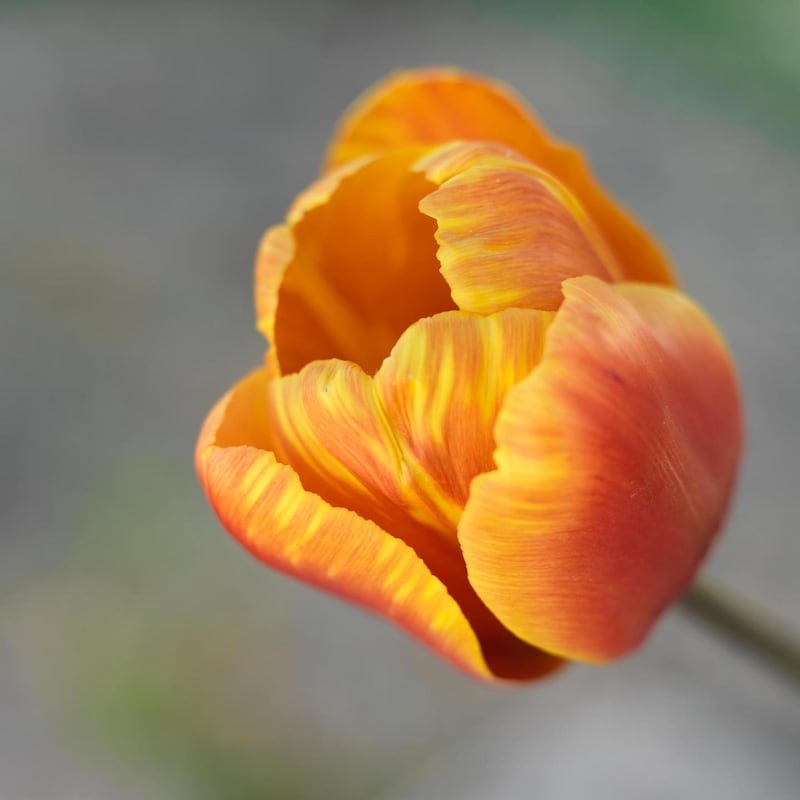
Tulips Seductively beautiful and available in a bewilderingly wide range of colour combinations as well as in a great variety of flower heights and flowering periods, these are the must-haves of any spring garden. Modern classics include the single-early, rich-orange flowered variety 'Cairo' (flowers April), the lily-flowered, scented, ember-coloured 'Ballerina' (April-May), sooty-red 'Jan Reus' (late April), burgundy-red 'National Velvet' (April-May) and the double late variety known as 'La Belle Epoque' (May), a marvelous shade of blush-apricot-caramel. Other attractive late double varieties include the pale pink 'Angelique' and the white-flowered 'Mount Tacoma'. Equally charming albeit in a more subtle way, many of the species-type tulips also make great garden plants and will self-seed over time if given the right growing conditions. Examples include the candy-striped Tulipa clusiana 'Peppermintstick' (April), the low-growing ruby-red Tulipa linifolia (May), and the scarlet-flowered Tulipa sprengeri (May-June, best in light shade) which will also slowly form self-seeded colonies in a meadow setting or in a patch of un-mown grass. Also reliably perennial in a meadow setting is Tulip 'Red Shine', whose tall, crimson-red flowers light up the garden in May. As a rule, tulips do best in full sun and a fertile, very well-drained soil.
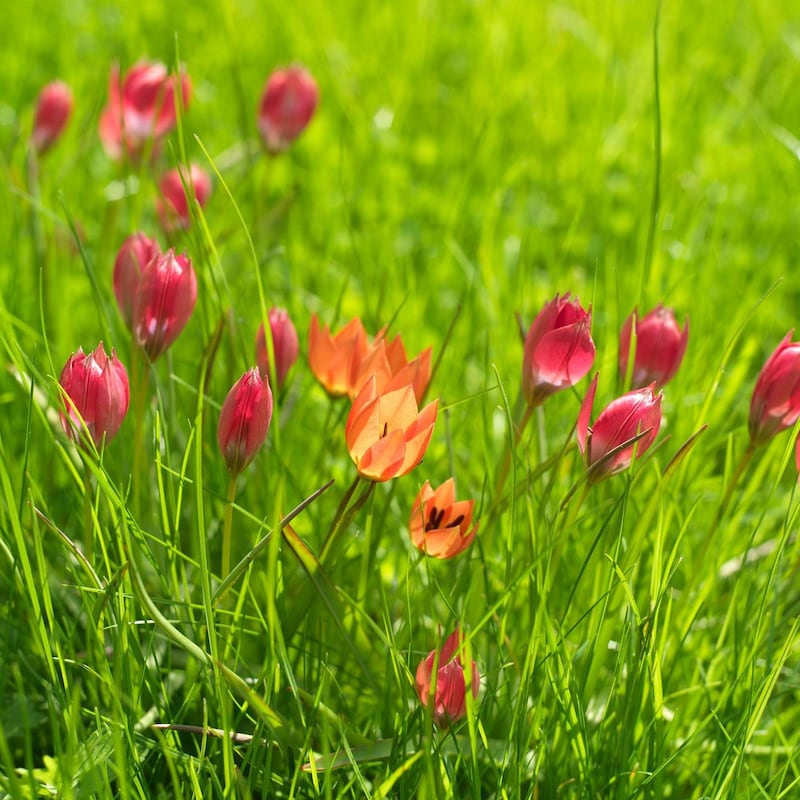
Crocus One of the first of the spring-flowering bulbs to come into bloom (February-March), the dainty crocus is always a welcome sight in the garden as well as a precious early source of nectar for pollinating insects. Many varieties are ideally suited to self-seeding/ naturalizing around the base of deciduous shrubs or in a orchard/ meadow-setting including the purple, large-flowered C. tommasanianus 'Ruby Giant' (best in light shade) and the silver-blue 'Yalta. Varieties of the showy, large-flowered Crocus vernus and Crocus flavus (commonly known as Dutch crocuses) such as the white-flowered 'Jeanne' Darc' and the pretty violet-and-white 'Pickwick' are also good for providing pops of bright spring colour and will also happily form large self-seeded colonies over time, but prefer a fertile soil in full sun. They also look good in a pot or container, as do varieties of the more refined Crocus chrysanthus including the early-flowering 'Cream Beauty', 'Blue Pearl' and 'Snow Bunting'. All crocuses like a very sharply drained soil and associate well with other low-growing, spring-flowering bulbs including scillas, chionodoxas, winter aconites, anemones and grape hyacinths.
This Week in the Garden
Mid-autumn is a good time of the year to plant spring and summer-flowering biennials such as wallflowers, foxgloves, honesty, sweet William and Icelandic poppies into their final growing positions in the garden or allotment or containers. As always, make sure to prepare the ground well before doing so by clearing it of weeds and adding a little garden compost and a sprinkle of powdered seaweed.
October is also an excellent time of year to plant garlic, onions and shallots as the ground is warm and moist enough to encourage good root establishment. Varieties of onion suitable for autumn planting include the ultra-hardy varieties ‘Radar’ and ‘Troy’ while recommended varieties of shallots include include ‘Jermor’ and ‘Griselle’. Varieties of garlic suitable for autumn planting include Vallelado, ‘Provence Wight’, ‘Red Duke’, ‘Lautrec Wight’, ‘Cristo’, Thermidrome’, ‘Marco’ and ‘Solent Wight’. All of these members of the allium family are typically planted as sets/small bulbs/cloves and need a fertile, free-draining, weed-free soil (not recently manured) in full sun. It’s also very important to only use sets/bulbs/cloves that are healthy, plump and free of obvious blemishes or damage to avoid disease and encourage a good crop. For the same reason, practice good crop rotation by avoiding planting into ground where you’ve recently grown members of the onion (allium) family.
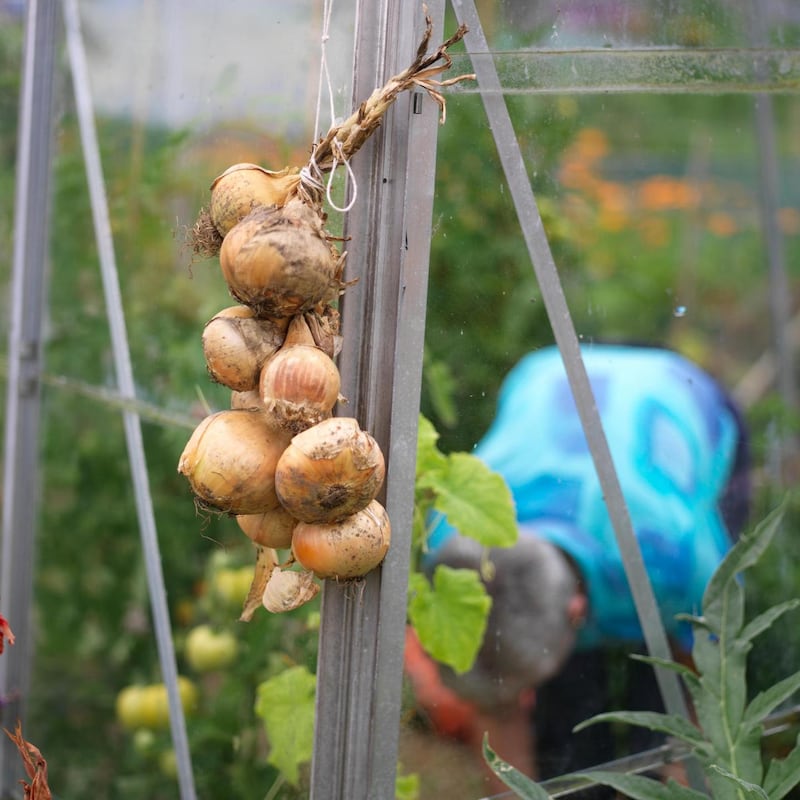
Broad beans and hardy peas are yet more delicious vegetables that you can sow in mid-autumn for an early crop next spring. Suitable varieties of broad beans for autumn sowing include ‘Claudia Aquadulce’ and ‘Super Aquadulce’ while varieties of peas recommended for autumn sowing include including ‘Douce Provence’, ‘Feltham First’, ‘Kelvedon Wonder’ and ‘Meteor’ (a compact variety suitable for container growing/small gardens). Seed can either be direct-sown into the garden or into root-trainers to transplant into their final growing positions once established. Either way, it’s important to take precautions against damage from slugs, birds as well as mice. Both peas and broad beans require a fertile, free-draining soil in full sun with shelter from cold winds.
Dates for Your Diary
Thursday, October 4th (8pm), The Artane Beaumont Family Recreation Centre, Kilmore Road, Artane, Dublin 5, a talk by rose breeder David Kenny on behalf of Dublin Five Horticultural Society, admission €5, call 087 2423020 for details. Also October 4th, National Tree Day, the theme of this year's campaign is 'Be Nature Nice', see treeday.ie for details of events taking place around the country; Saturday, October 7th (10am-1pm), Dalkey Garden School, Mornington, Saval Park Road, Dalkey, Co Dublin, "Arranging Flowers for Winter" a half-day floral workshop with Sally Horn. Saturday, October 13th (9am-5pm), City West Hotel, CityWest, Saggart, Co Dublin, Mr Middleton's Autumn Garden Masterclass, a day of talks and advice from garden experts including Nick Hamilton of Barnsdale Gardens (son of the late Geoff Hamilton), garden writer, broadcaster and RHS judge Martin Fish, garden writer and broadcaster Marie Staunton and Thomas Quearney, aka Mr Middleton, host and founder of one of Ireland's best known and longest-established garden shops, tickets €80 including lunch, refreshments and a take-home bag of gardening goodies, pre-booking essential, call 01-8603674 or visit mrmiddleton.com.













